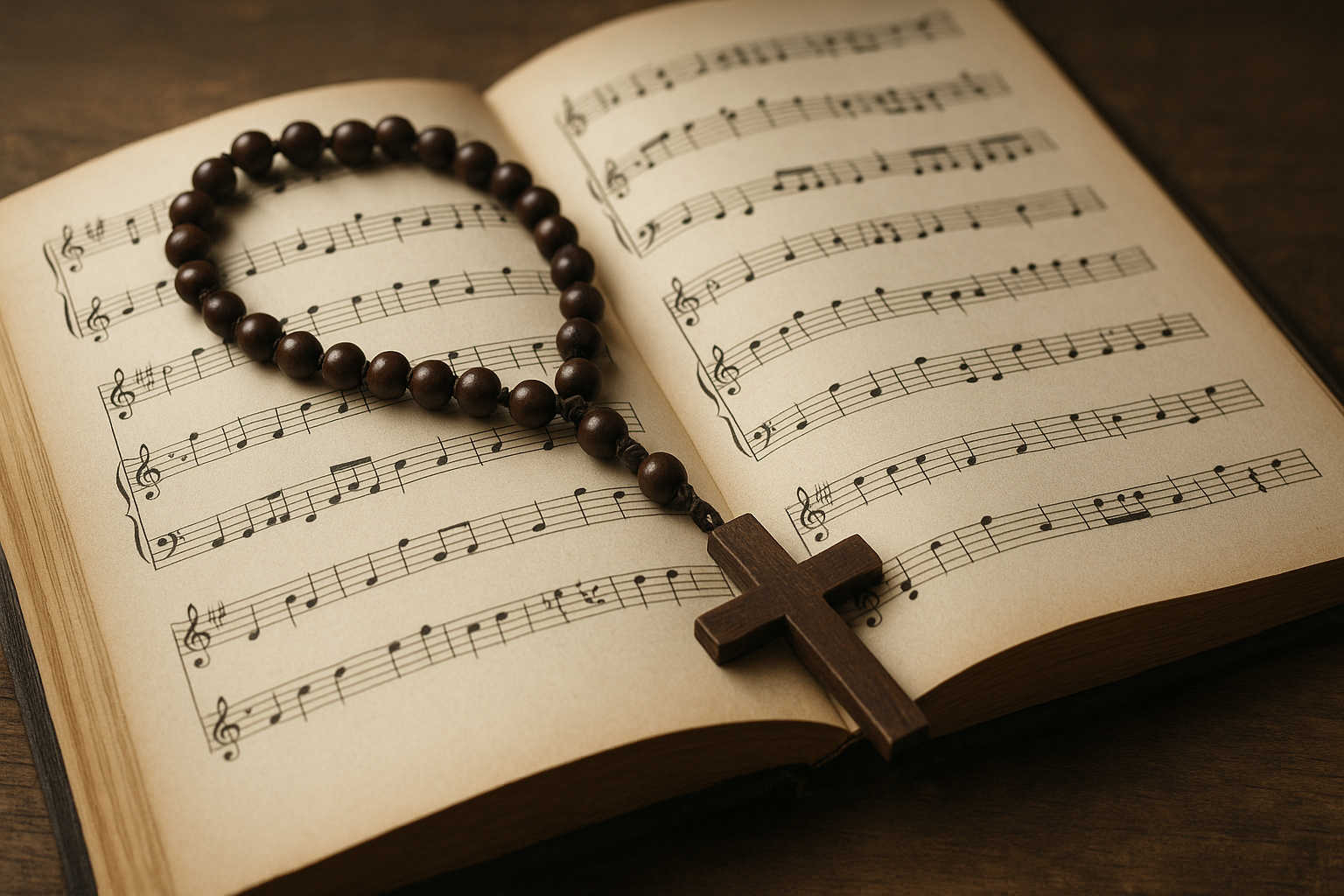Music and religion have been intertwined throughout history, with each shaping and influencing the other. Not merely as a backdrop to ritualistic practices, music in various forms of faith has evolved to be a conduit for spiritual expression and a structured pathway for worship and contemplation.
An Ancient Symphony of Spirit
In many ancient cultures, music was regarded as a divine gift. For example, in Greek mythology, Orpheus’ lyre could enchant all living things and even inanimate objects. The religious rituals of ancient Greece often employed music as an essential component. According to Smithsonian Folkways, “music in ancient Greece was almost always linked to the divine” (source).
The Medieval Church: Crafting the Canon
The Christian Church during the medieval period became a powerful patron of music. This era witnessed the rise of the Gregorian chant, a form of plainchant instrumental in formal worship. The chants, named after Pope Gregory I, were influential in standardizing a unified liturgical practice across Christendom.
“The Gregorian chant exemplifies the perfect union between text and music, designed to enhance the spiritual messages of the church” – Musicologist Joan Gerard
Moreover, the architectural grandeur of Gothic cathedrals is often credited with encouraging the development of polyphonic music. Inside these vast spaces, the acoustics amplified sounds, allowing for the intricate interweaving of voices—each independent yet harmoniously united.
Eastern Spirituality: Rhythm and Reflection
In Eastern traditions such as Hinduism and Buddhism, music plays a vital role in spiritual life. The ethereal sounds of the veena or sitar in Indian spirituality are associated with the goddess Saraswati and Shiva, respectively. Music’s rhythm and melody support meditation, helping practitioners focus and find inner peace.
In Buddhism, the chanting of mantras with specific tonal inflections aims to bring practitioners into a deeper meditative state. As noted in a study by Pew Research, these chants are believed to resonate with the universe, manifesting harmony within one’s self and the surroundings.
Islamic Influence: Maqam and Mysticism
Islamic devotional music demonstrates the complexity and beauty of spiritual expression in forms like the na’at and nasheed. These vocal compositions often praise the Prophet Muhammad and convey a rich poetic tradition rooted in passion and reverence.
The rich musical system of maqam provides structured melodic patterns that express different emotional states. This modality forms the bedrock of much traditional Arab music and is crucial in promoting the spiritual ethos during religious festivals and gatherings.
“In the Islamic tradition, music serves as an auditory path to contemplation, where the soul elevates in atunement with the divine” – Scholar Tariq al-Jamil
Modern Interpretations and Ecumenical Echoes
Even in modern times, religious music continues to evolve. Gospel music in the African American tradition merges the emotional experience of faith with a cultural history of struggle and overcoming. As noted by The Library of Congress, “Gospel music has enriched American culture with its spirited hymns and the powerful message of hope” (source).
Similarly, contemporary Christian music blends pop and rock elements with evangelical themes, often aiming to reach younger audiences and rejuvenate community engagement in spiritual life. These compositions bridge the sacred and the secular, maintaining the core values of religious beliefs while embracing modernity.
Universal Harmony through Melody
The intersection of faith and music highlights a universal truth: the quest for transcendence. Across different religions and traditions, this pursuit resonates in harmonious expressions meant to elevate the soul and nurture the spirit.
As we continue to explore how these vibrant art forms influence and enrich each other, we are reminded that music, like faith, transcends the earthly domain, echoing a larger cosmic order that binds humanity in its melodic embrace.
